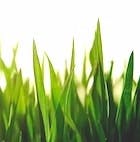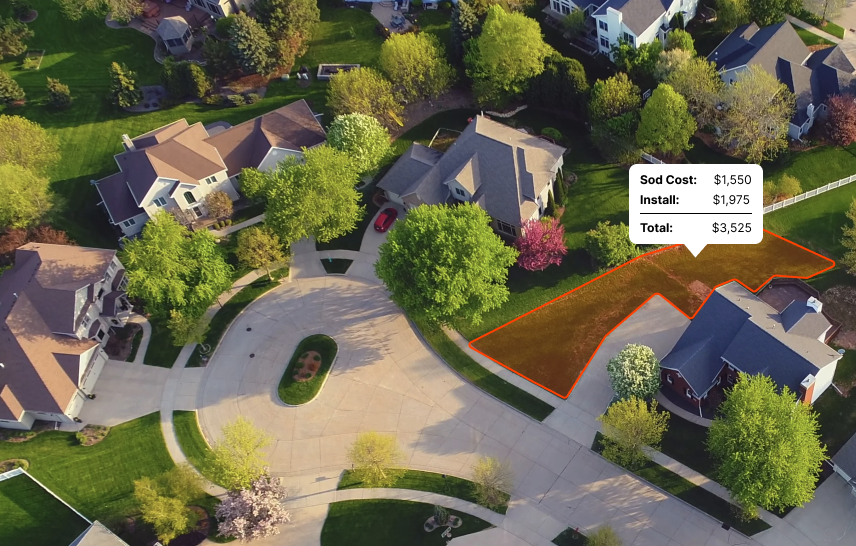Overall, Alabama's climate plays a significant role in determining the types of grass that can grow successfully in the state. Understanding the climate and grass zone can help homeowners and landscapers choose the best grass for their lawns and gardens.”
Introduction
Alabama has a humid subtropical climate, which means it has hot summers and mild winters with high humidity throughout the year. This climate affects the types of grass that are best grown in the state.
Grasses that can tolerate high temperatures and humidity, as well as occasional droughts, are ideal for Alabama. The best time to lay grass in Alabama is during the spring and fall when temperatures are cooler and there is more rainfall.
This allows the grass to establish its roots before the hot summer months. Alabama is located in the warm-season grass zone, which means that warm-season grasses are the most suitable for the state.
These grasses thrive in the hot and humid conditions of the state and can withstand droughts. Warm-season grasses are typically planted in the spring or early summer and go dormant during the winter months.
What are the best sod types for AL?
In the world of landscaping, not all grasses are created equal. Each thrives in a specific climate zone: cool, warm, or transition.
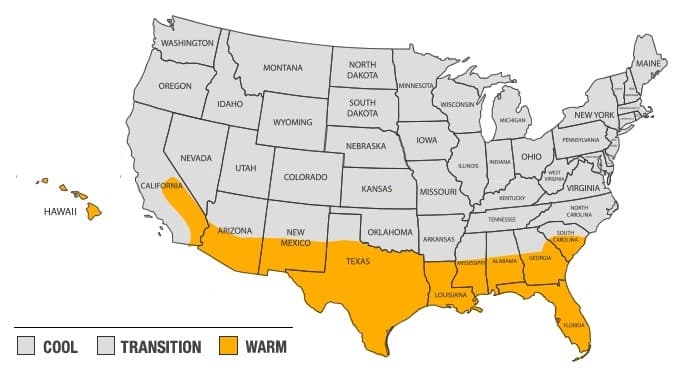
Alabama, with its warm season climate, prefers a particular set of grasses that relish the higher temperatures. The following sods are the easiest to grow and maintain in Alabama:
While it's possible to grow grasses meant for other regions with proper care, attention and timing, these are the most common grasses in Alabama for residential lawns.
Level Up Your Lawn Skills
Once per week we'll send you an interview from someone who has mastered the art of lawn care.
Recommended species for shade
We're diving knee-deep into the world of shaded grasses, folks. They’re the secret superheroes of your lawn and we’re blowing their cover. In sweet home Alabama, not all heroes shine under the blazing, Southern sun. Some prefer the cool vibe of the shade. We're talking about the grass varieties that will give your shaded lawn that lush, velvety-green carpet feel. Let's get straight into it.
Say hello to St. Augustine grass. It's fine textured and has a high shade tolerance. This thick, carpet-like grass absolutely thrives in Alabama's soil. Just remember it needs 4-6 hours of sunlight each day. Don't make it live the life of a vampire. Give it some sun, love and water and you'll have a beautiful lawn that’s sure to be the envy of the neighborhood.
Next up, Centipede Grass. This low maintenance slow grower doesn't crave the spotlight. In fact, it will put your sun-loving sod to shame. It requires fewer cuttings, less fertilization but still delivers a medium-textured, fair quality turf. It plays hard to get by demanding 4 hours of daily sunlight. Keep it cool and you're golden, Alabama!
Don’t forget Zoysia grass. It's the tough guy on the block, putting up a good fight in both sun and shade. This grass is slow to establish but once it has, it’s your trusted companion. Zoysia requires about 6 hours of sunshine daily but still manages to perform well in shaded areas.
Finally, meet the Fescue family. These cool season grasses like Fine Fescue and Tall Fescue bring beauty to those challenging shaded spaces. But don’t be fooled by the ‘cool’ tag. A moderate 4-6 hours of sunlight is ample to help these grass types thrive.
Remember though, grass needs sunlight. Shade tolerant doesn't mean light-proof. Select the one that suits your garden, treat it well, and before you know it, you're sitting on your porch looking at the best sodding lawn this side of Alabama.
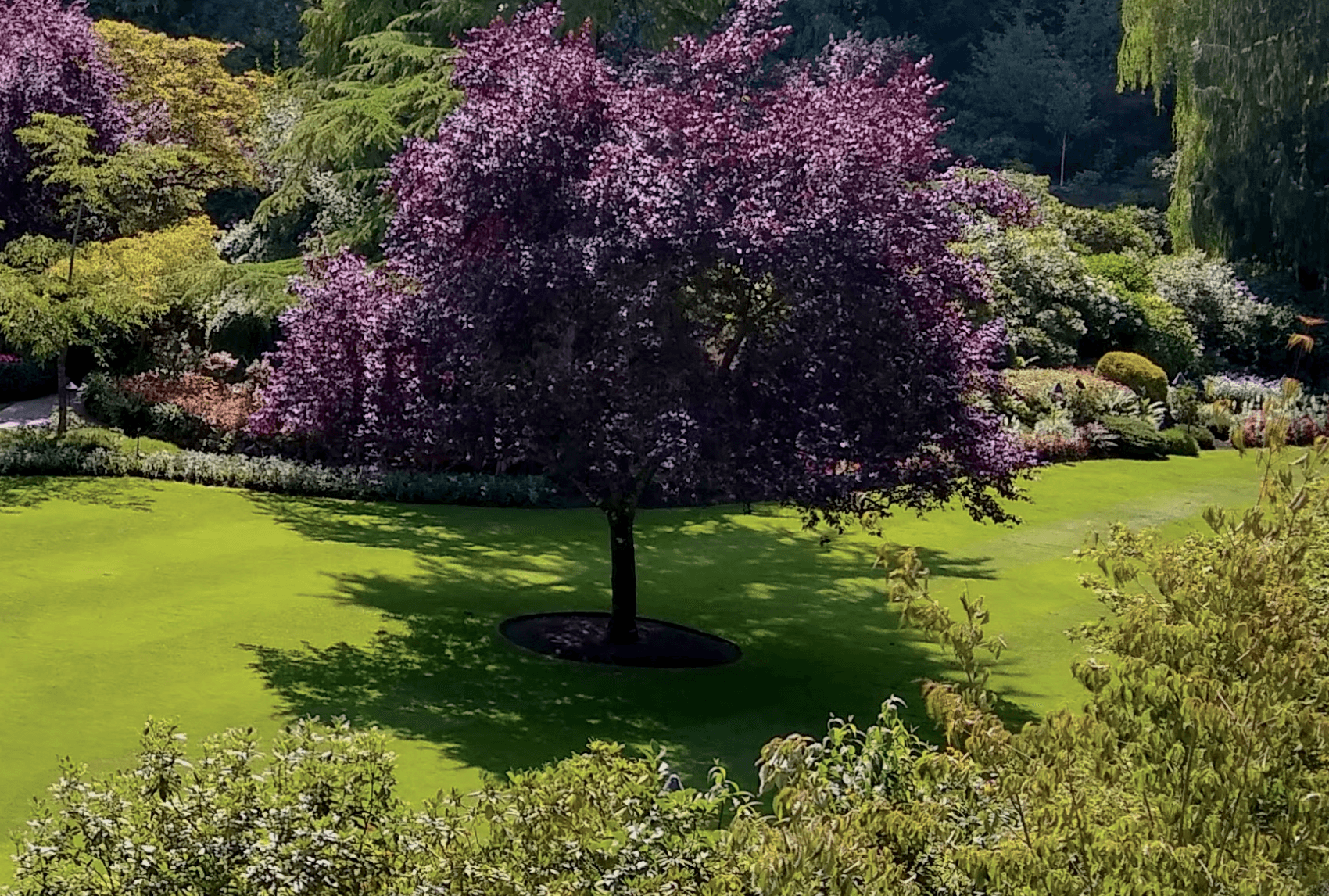
Recommended for full sun or partial sun
Choosing the right sod for your lawn depends heavily on the sunlight exposure in your yard. Different grass types have varying light requirements for optimal growth and appearance. Assessing whether your lawn receives full or partial sun is essential in selecting sod that will flourish and stay healthy in your specific environment.
Below are some sod options recommended for either full sun or partial sun conditions in AL:
| Grass Type | Sun | Good to Know |
|---|---|---|
| Bermuda | Full | Bermuda grass thrives in full sun and is known for its drought tolerance and ability to withstand high temperatures. |
| Zoysia | Full | Zoysia grass prefers full sun but can tolerate some shade. It is known for its dense turf and resistance to pests and diseases. |
| St. Augustine | Partial | St. Augustine grass performs well in partial sun and is valued for its ability to establish quickly and provide a thick, green lawn. |
| Tall Fescue | Partial | Tall Fescue is adaptable to a range of conditions, including partial sun, and is known for its deep root system and tolerance to drought. |
What varieties stay green year-round?
As with anything agriculture related, there is some nuance to this question. There are many grasses that can stay green year round in but it depends heavily on your location within Alabama as well as any microclimates that may exist.
The following grasses have the ability to stay green year round in Alabama:
| Grass Type | Caveats |
|---|---|
| Bermuda | It typically goes dormant and turns brown after a few hard frosts in the fall and stays that way until temperatures consistently hit the 60s in the spring. |
| Zoysia | It can stay green nearly year-round in milder climates without severe winter freezes or overly high summer temperatures. |
| St. Augustine | It can stay green almost year round, but will go dormant and turn brown during cool-season months in colder regions. |
| Tall Fescue | It typically stays green throughout the year in milder climates, given that it isn't overly stressed by heat or drought in the summer. |
What is the best time to lay sod in Alabama?
In a warm-season location, lay sod in late spring or early summer. This timing is ideal as the warmer temperatures and longer days will promote quick root establishment and growth. Avoid laying sod in the cooler months as the grass will likely enter dormancy, slowing down the root establishment process. So, for success, stick to late spring or early summer when it's 75 to 90 degrees out.
As you can see in the image below, you'll notice the most shoot growth (the grass above ground) and root growth during the summer for warm season grasses:
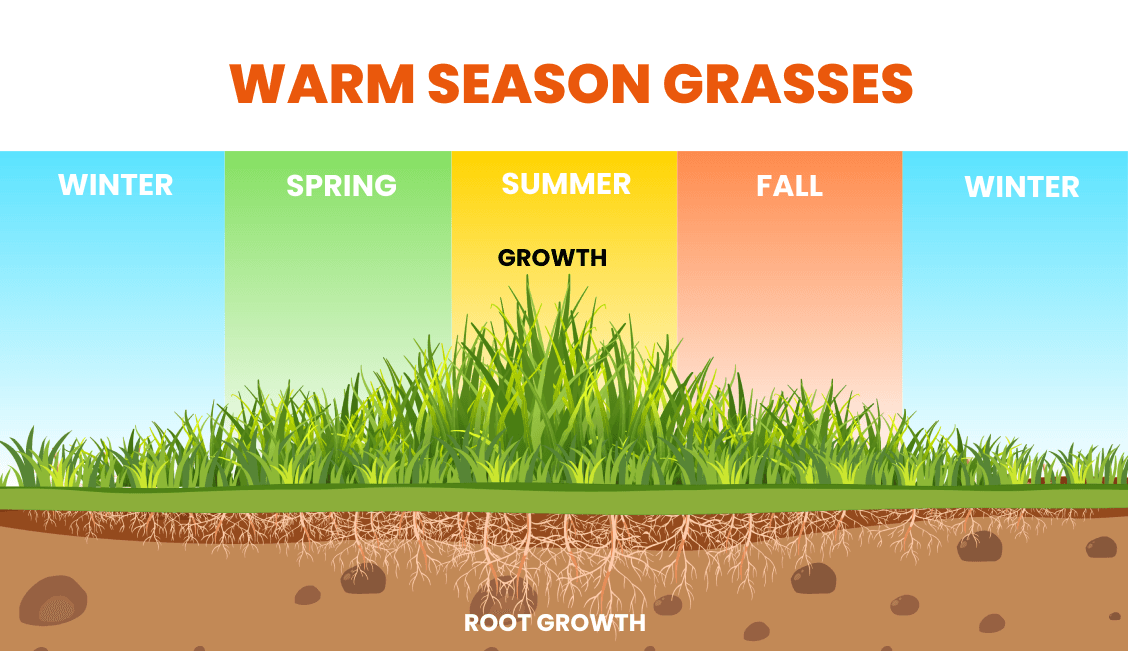
Find reputable companies for installing sod in AL
Here are the top problems you'll face when trying to get sod installed by a landscaping company:
- They're not transparent about pricing. You'll often get a quote that's way higher than you'd expect.
- They're hard to get ahold of on the phone or you'll reach out online but won't hear back.
- It's hard to pin them down for a specific date. Because you can only bring sod from the farm when there's decent weather, this causes some delays at times. It also has a short shelf life, so it's important to get it installed within a day or two of delivery.
We've done all the work for you. Click below to get a quote from one of the top installers in Alabama.
